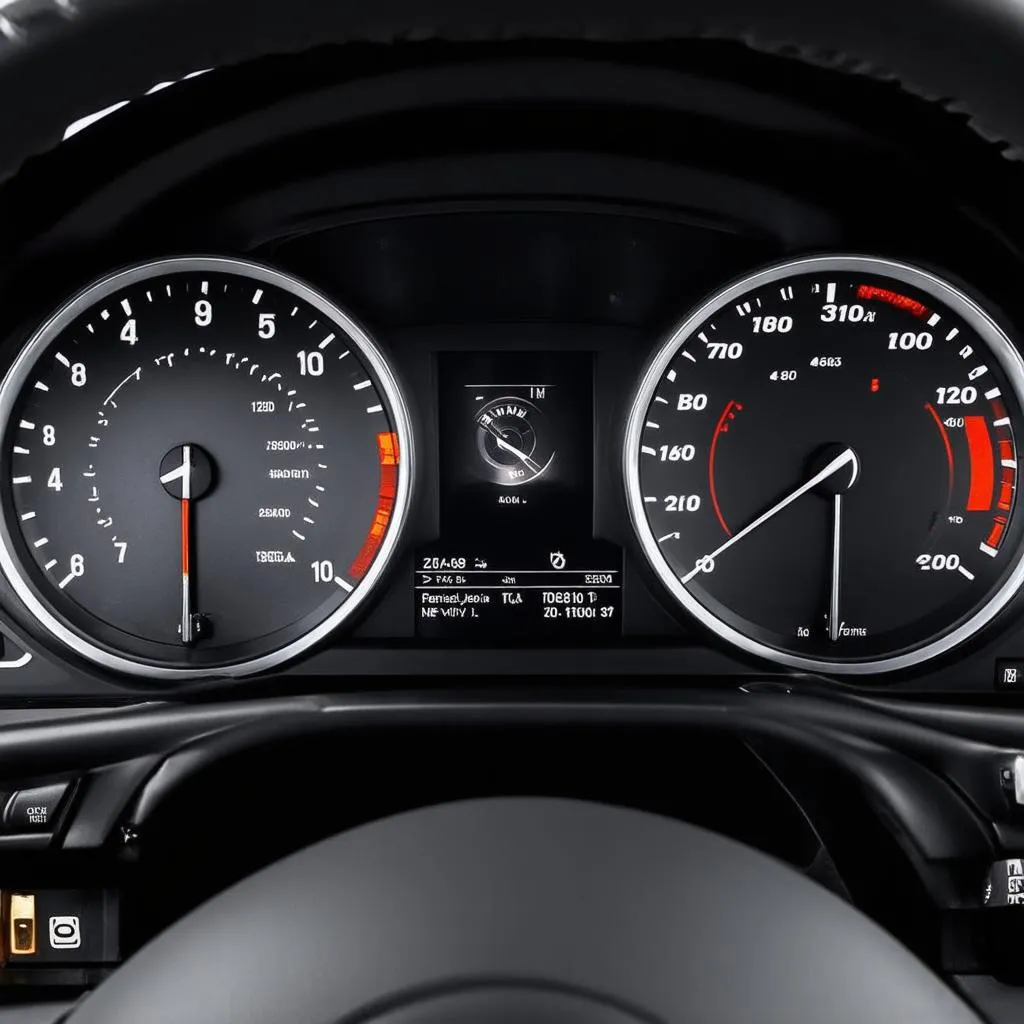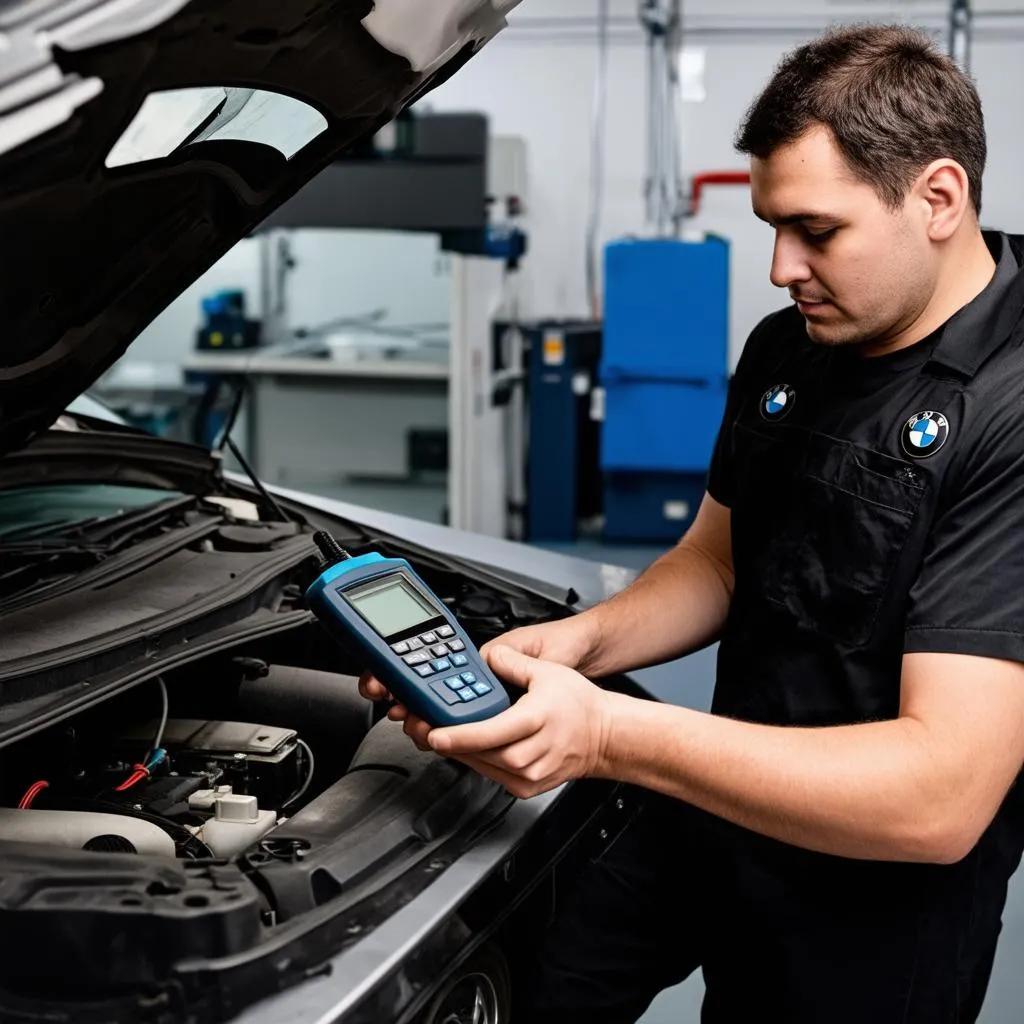Imagine this: You’re cruising down the Pacific Coast Highway, California sunshine warming your face, the wind whipping through your hair. You glance down at your BMW E90 325i’s instrument cluster to check your speed, and… nothing. The gauges are dead, the warning lights are out, it’s like the car has suddenly lost its soul. But here’s the kicker: your OBD port works just fine. What gives?
This eerie scenario is more common than you might think, and it can be a real head-scratcher for BMW owners. But don’t worry, you’re not alone! In this article, we’ll delve deep into the mysterious case of a dead instrument cluster with a working OBD port on a BMW E90 325i. We’ll explore common causes, troubleshooting tips, and even touch upon some of the superstitious beliefs associated with car electrical problems.
Decoding the Enigma: What Does it Mean?
Let’s break this down. Your instrument cluster is like the car’s nervous system, displaying vital information about speed, engine performance, fuel level, and warning lights. The OBD port, on the other hand, is like a doctor’s portal, allowing you to communicate with the car’s computer (ECU) and diagnose problems.
So, when the instrument cluster goes dark but the OBD port remains active, it suggests that:
- The problem is likely isolated to the instrument cluster itself or its communication lines. The ECU is still functioning and communicating with the OBD port, meaning the car’s brain is intact.
- It’s probably not a major electrical failure. A complete electrical failure would likely affect both the instrument cluster and the OBD port.
But what could cause such a specific failure? Let’s investigate.
Unmasking the Culprit: Common Causes and Solutions
Here are some potential culprits behind this automotive mystery:
1. Faulty Instrument Cluster: Just like any electronic component, the instrument cluster itself can fail. This could be due to a blown fuse, damaged circuitry, or simply age-related wear and tear.
- Solution: The most straightforward solution is often a replacement instrument cluster.
2. Communication Breakdown: The instrument cluster communicates with the ECU via a network called the CAN bus. A problem with the CAN bus wiring, a faulty gateway module, or a software glitch can disrupt this communication, leading to a blank instrument cluster.
- Solution: Check the CAN bus wiring for damage, especially around the instrument cluster area. If you’re comfortable with electronics, you can try checking the gateway module (often located behind the glove box). A software update or reset might also resolve communication issues.
3. Power Supply Issues: The instrument cluster requires a dedicated power supply to function. A blown fuse, a faulty relay, or a wiring problem in the power line can starve the cluster of electricity, rendering it useless.
- Solution: Check the fuse box for any blown fuses related to the instrument cluster. Inspect the relays and wiring for any signs of damage or loose connections.
4. Grounding Gremlins: A poor electrical ground connection can cause a multitude of electrical gremlins, including a dead instrument cluster.
- Solution: Check the grounding points for the instrument cluster and ensure they are clean and tight.
5. Hidden Meanings: In some cultures, car troubles are seen as omens or signs. A malfunctioning instrument cluster, for example, might be interpreted as a warning to slow down or pay attention to your surroundings. While these beliefs are purely superstitious, they highlight the deep connection between humans and their vehicles.
Navigating the Maze: Troubleshooting Tips
Here’s a step-by-step guide to help you get to the bottom of the issue:
- Check the Obvious: Begin by inspecting the fuses related to the instrument cluster. A blown fuse is a common and easily fixable problem.
- Scan for Trouble Codes: Since your OBD port works, connect a code reader and see if any fault codes are stored in the ECU. These codes can provide valuable clues about the underlying problem.
- Inspect the Wiring: Carefully examine the wiring harness around the instrument cluster, looking for any signs of damage, loose connections, or corrosion.
- Seek Professional Help: If you’re uncomfortable working on car electronics or suspect a more complex issue, it’s best to consult a qualified BMW mechanic. They have the expertise and tools to diagnose and repair the problem efficiently.
Frequently Asked Questions
Q: Can I drive my BMW E90 325i with a dead instrument cluster?
A: While technically possible for a short distance, it’s highly discouraged. Driving without a functioning instrument cluster is extremely dangerous, as you’ll be blind to crucial information like speed, engine temperature, fuel level, and warning lights.
Q: Is it expensive to fix a BMW E90 325i instrument cluster?
A: The cost of repair can vary widely depending on the root cause. A simple fuse replacement might cost a few dollars, while a new instrument cluster can set you back several hundred dollars.
Q: Can a software update fix a dead instrument cluster?
A: In some cases, a software update or reset can resolve communication issues that might be causing the problem. However, this is not always a guaranteed fix.
Related Questions
- BMW E90 instrument cluster coding
- Common BMW E90 electrical problems
- DIY BMW E90 instrument cluster repair
Compatible Car Brands
While this article focuses on the BMW E90 325i, similar issues with instrument clusters can occur in various other BMW models and even other car brands.
 BMW E90 instrument cluster
BMW E90 instrument cluster
 BMW Mechanic Diagnosing Problem
BMW Mechanic Diagnosing Problem
Need Expert Help?
Facing the black abyss of a dead instrument cluster can be daunting, but remember, you don’t have to navigate this alone. Our team of expert automotive technicians is just a WhatsApp message away. Contact us at +84767531508, and we’ll help you get your BMW E90 325i’s heart beating again.
Happy Driving!